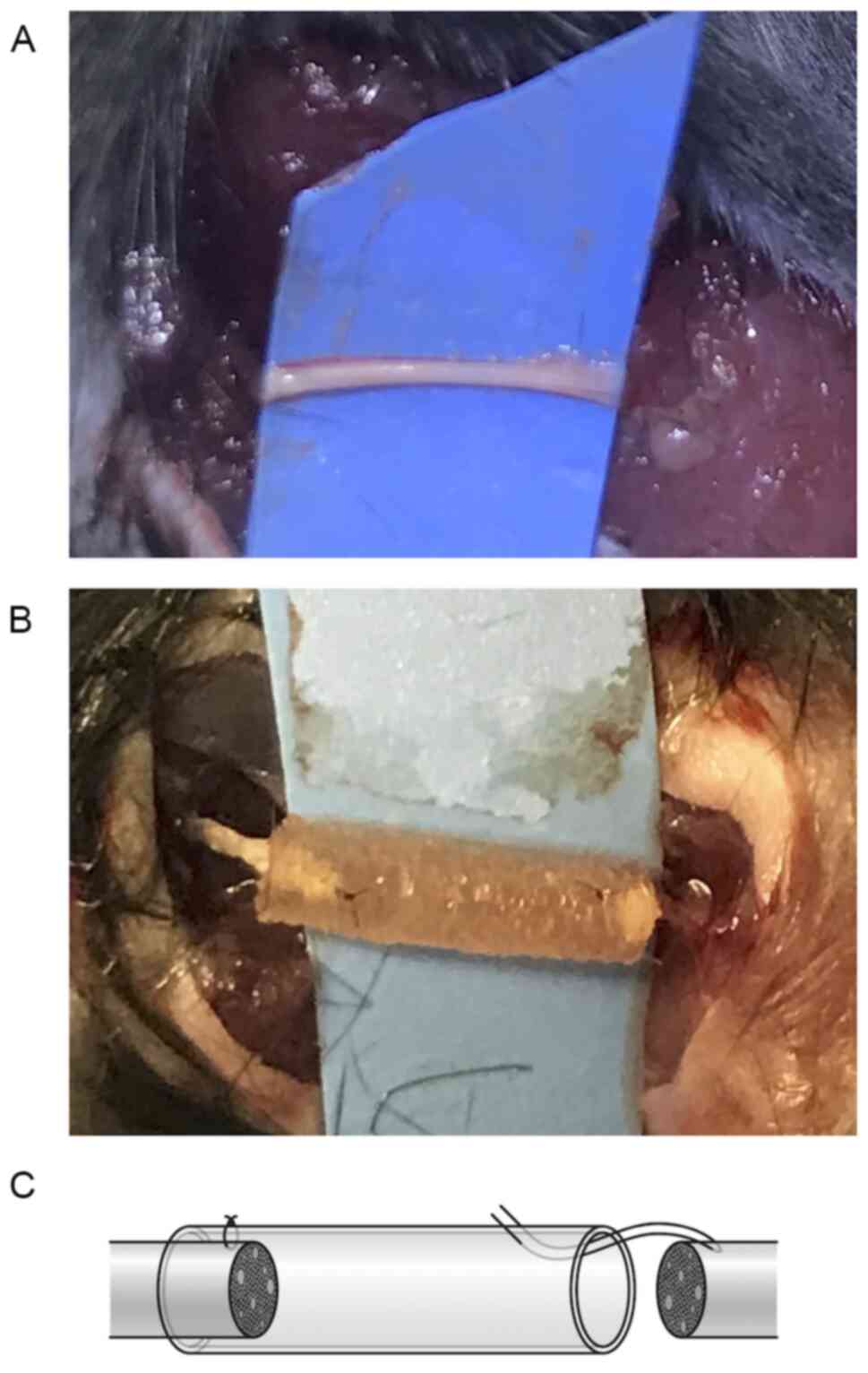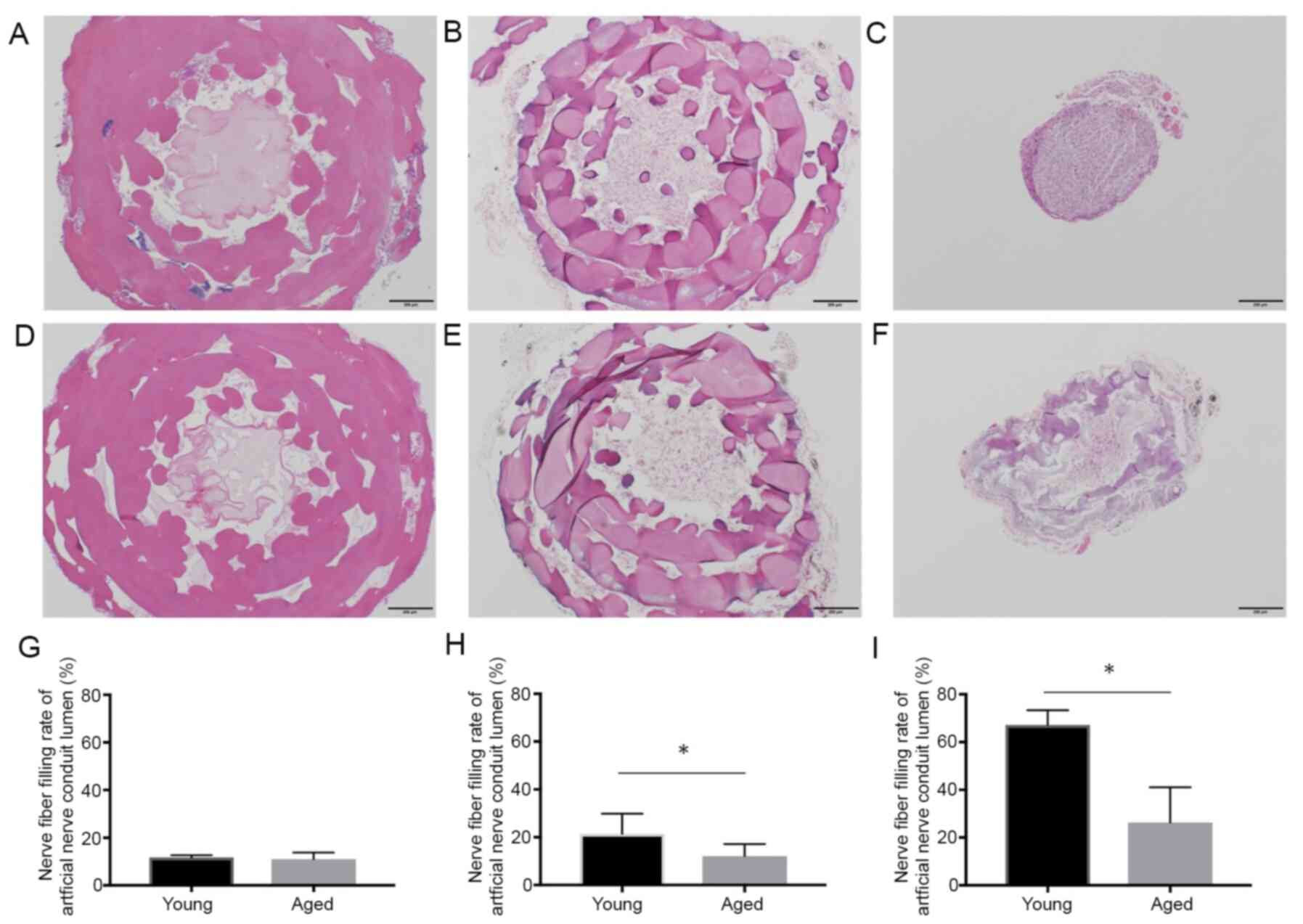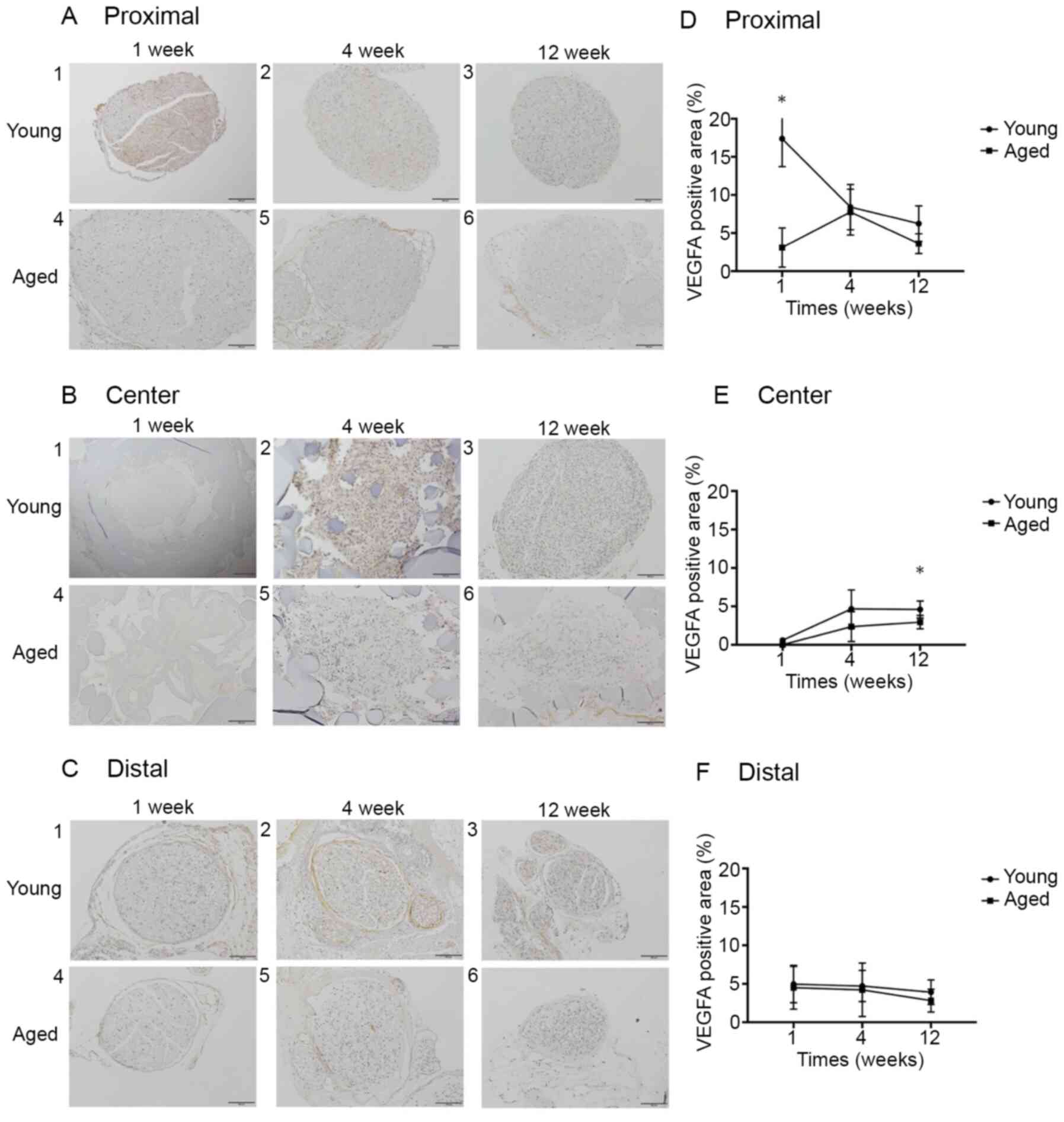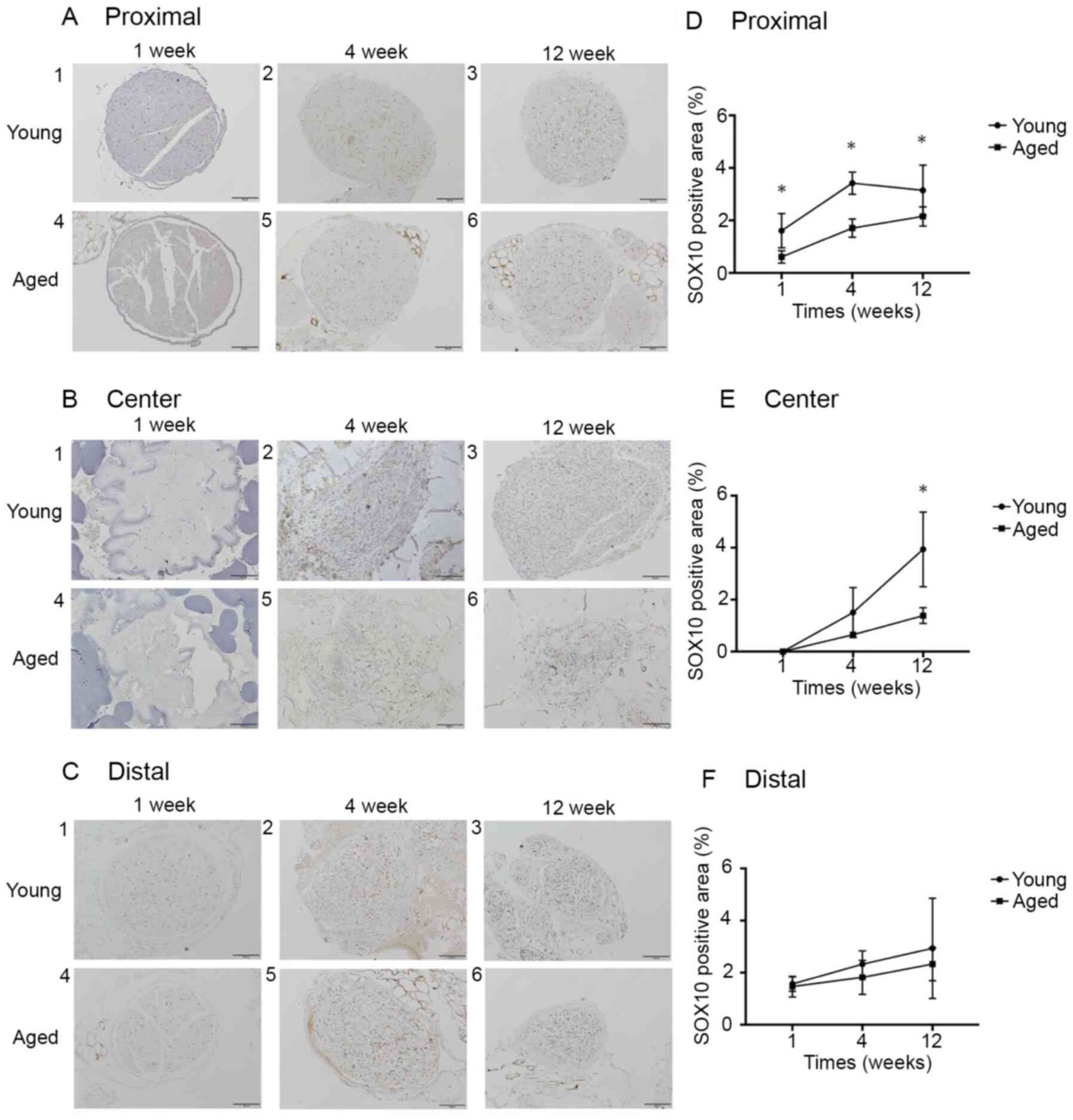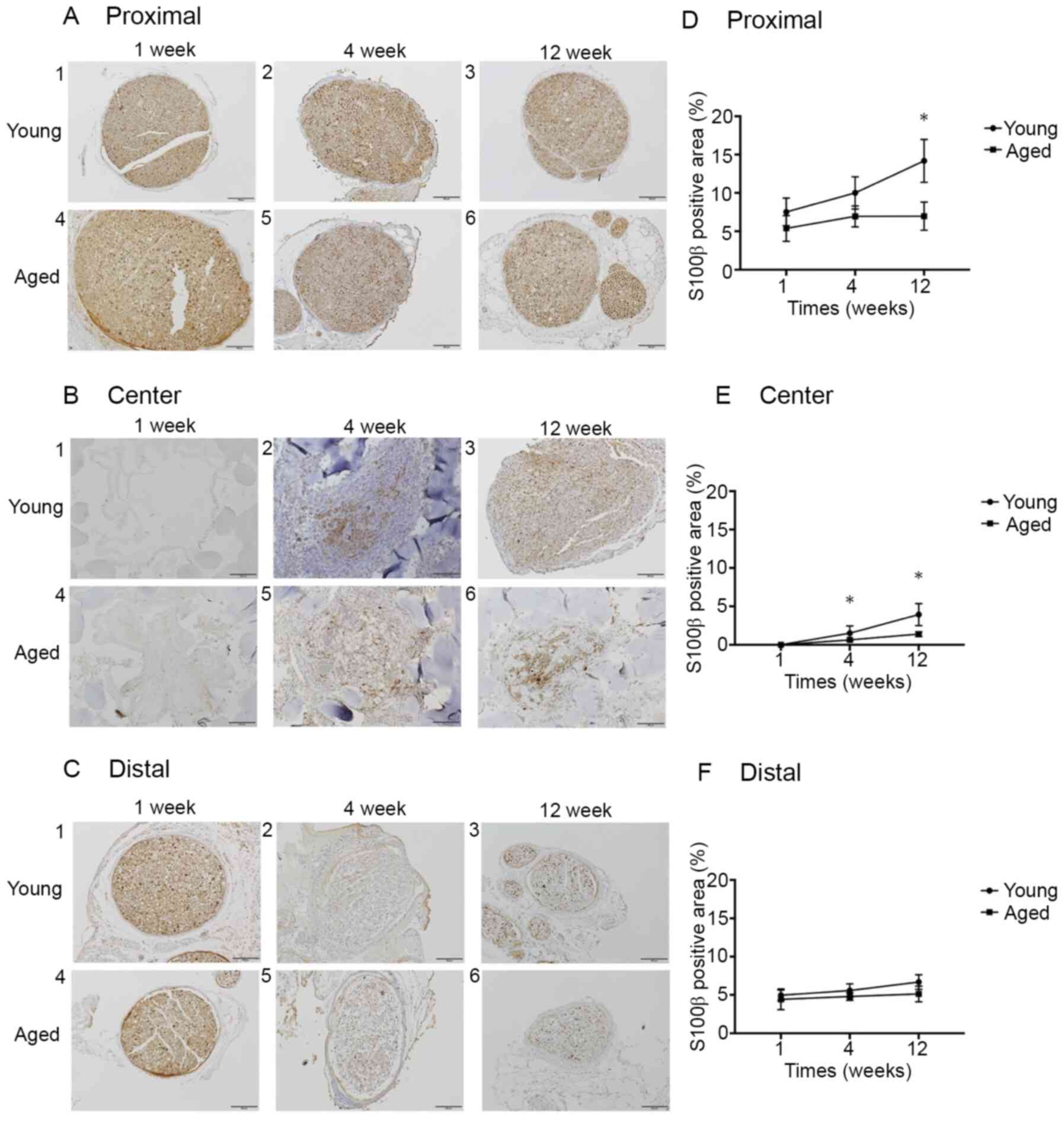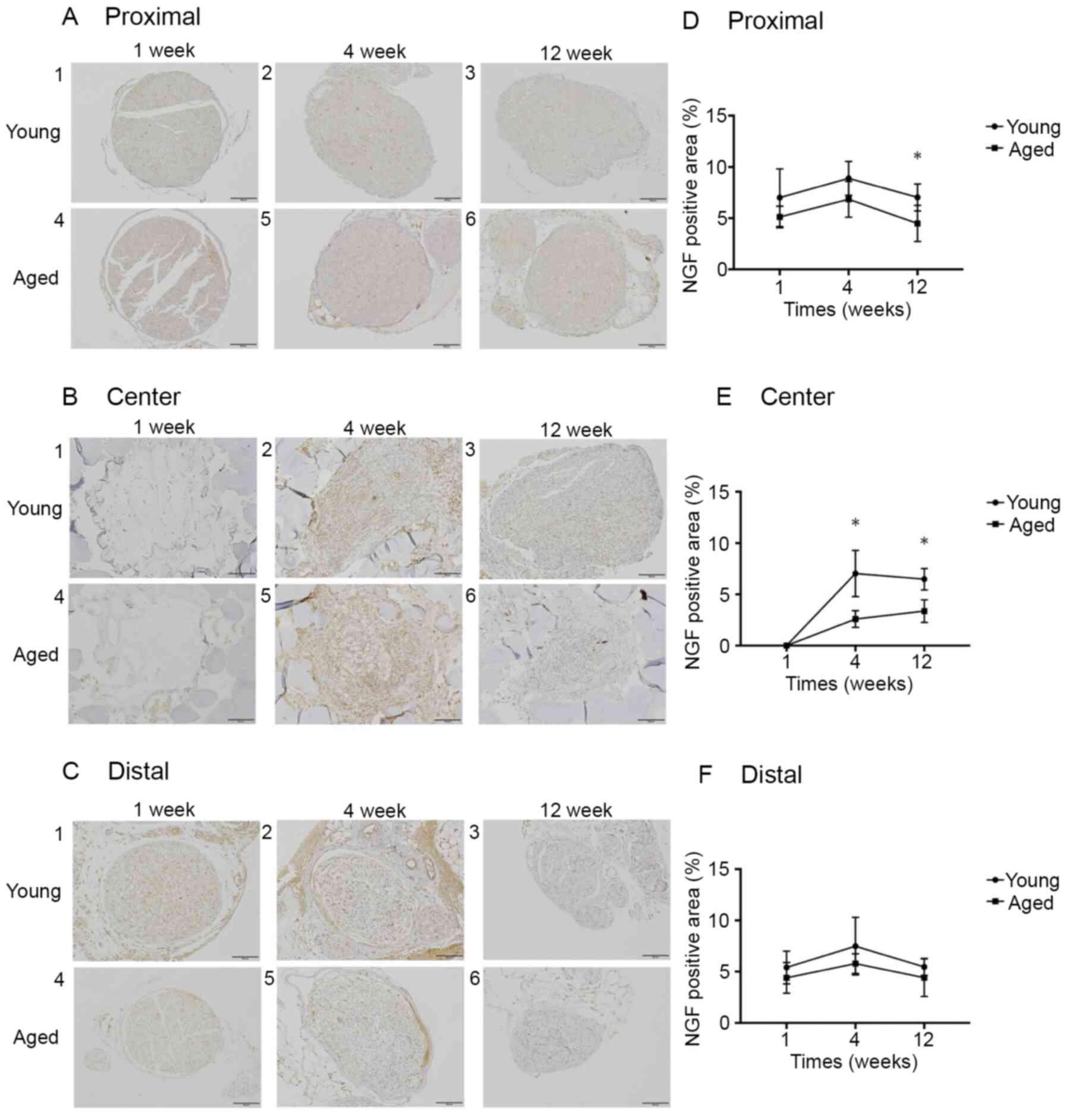|
1
|
Iijima Y, Ajiki T, Murayama A and
Takeshita K: Effect of artificial nerve conduit vascularization on
peripheral nerve in a necrotic bed. Plast Reconstr Surg Glob Open.
4(e665)2016.PubMed/NCBI View Article : Google Scholar
|
|
2
|
Kornfeld T, Vogt PM and Radtke C: Nerve
grafting for peripheral nerve injuries with extended defect sizes.
Wien Med Wochenschr. 169:240–251. 2019.PubMed/NCBI View Article : Google Scholar
|
|
3
|
Rbia N, Bulstra LF, Saffari TM, Hovius SER
and Shin AY: Collagen nerve conduits and processed nerve allografts
for the reconstruction of digital nerve gaps: A single-institution
case series and review of the literature. World Neurosurg.
127:e1176–e1184. 2019.PubMed/NCBI View Article : Google Scholar
|
|
4
|
Siemionow M, Cwykiel J, Uygur S, Kwiecien
G, Oztürk C, Szopinski J and Madajka M: Application of epineural
sheath conduit for restoration of 6-cm long nerve defects in a
sheep median nerve model. Microsurgery. 39:332–339. 2018.PubMed/NCBI View Article : Google Scholar
|
|
5
|
Biasibetti E, Bisanzio D, Mioletti S,
Amedeo S, Iuliano A, Bianco P and Capucchio MT: Spontaneous
age-related changes of peripheral nerves in cattle: Morphological
and biochemical studies. Anat Histol Embryol. 45:100–108.
2015.PubMed/NCBI View Article : Google Scholar
|
|
6
|
Goto K, Naito K, Nakamura S, Nagura N,
Sugiyama Y, Obata H, Kaneko A and Kaneko K: Protective mechanism
against age-associated changes in the peripheral nerves. Life Sci.
253(117744)2020.PubMed/NCBI View Article : Google Scholar
|
|
7
|
Novak CB, Anastakis DJ, Beaton DE,
Mackinnon SE and Katz J: Biomedical and psychosocial factors
associated with disability after peripheral nerve injury. J Bone
Joint Surg Am. 93:929–936. 2011.PubMed/NCBI View Article : Google Scholar
|
|
8
|
Fields RD, Le Beau JM, Longo FM and
Ellisman MH: Nerve regeneration through artificial tubular
implants. Prog Neurobiol. 33:87–134. 1989.PubMed/NCBI View Article : Google Scholar
|
|
9
|
Painter MW, Lutz AB, Cheng YC,
Latremoliere A, Duong K, Miller CM, Posada S, Cobos EJ, Zhang AX,
Wagers AJ, et al: Diminished schwann cell repair responses underlie
age-associated impaired axonal regeneration. Neuron. 83:331–343.
2014.PubMed/NCBI View Article : Google Scholar
|
|
10
|
Verdú E, Ceballos D, Vilches JJ and
Navarro X: Influence of aging on peripheral nerve function and
regeneration. J Peripehr Nerv Syst. 5:191–208. 2000.PubMed/NCBI View Article : Google Scholar
|
|
11
|
Pola R, Aprahamian TR, Bosch-Marcé M,
Curry C, Gaetani E, Flex A, Smith RC, Isner JM and Losordo DW:
Age-dependent VEGF expression and intraneural neovascularization
during regeneration of peripheral nerves. Neurobiol Aging.
25:1361–1368. 2004.PubMed/NCBI View Article : Google Scholar
|
|
12
|
Cattin AL, Burden JJ, Van Emmenis L,
Mackenzie FE, Hoving JJ, Garcia Calavia N, Guo Y, McLaughlin M,
Rosenberg LH, Quereda V, et al: Macrophage-induced blood vessels
guide Schwann cell-mediated regeneration of peripheral nerves.
Cell. 162:1127–1139. 2015.PubMed/NCBI View Article : Google Scholar
|
|
13
|
Nishida Y, Yamada Y, Kanemaru H, Ohazama
A, Maeda T and Seo K: Vascularization via activation of VEGF-VEGFR
signaling is essential for peripheral nerve regeneration. Biomed
Res. 39:287–294. 2018.PubMed/NCBI View Article : Google Scholar
|
|
14
|
Fujiwara S, Hoshikawa S, Ueno T, Hirata M,
Saito T, Ikeda T, Kawaguchi H, Nakamura K, Tanaka S and Ogata T:
SOX10 transactivates S100B to suppress Schwann cell proliferation
and to promote myelination. PLoS One. 9(e115400)2014.PubMed/NCBI View Article : Google Scholar
|
|
15
|
Jessen KR and Mirsky R: Signals that
determine Schwann cell identity. J Anat. 200:367–376.
2002.PubMed/NCBI View Article : Google Scholar
|
|
16
|
Kuhlbrodt K, Herbarth B, Sock E,
Hermans-Borgmeyer I and Wegner M: Sox10, a novel transcriptional
modulator in glial cells. J Neurosci. 18:237–250. 1998.PubMed/NCBI View Article : Google Scholar
|
|
17
|
Budni J, Bellettini-Santos T, Mina F,
Garcez ML and Zugno AI: The involvement of BDNF, NGF and GDNF in
aging and Alzheimer's disease. Aging Dis. 6:331–341.
2015.PubMed/NCBI View Article : Google Scholar
|
|
18
|
Chen ZW and Wang MS: Effects of nerve
growth factor on crushed sciatic nerve regeneration in rats.
Microsurgery. 16:547–551. 1995.PubMed/NCBI View Article : Google Scholar
|
|
19
|
Hasenöhrl RU, Söderstróm S, Mohammed AH,
Ebendal T and Huston JP: Reciprocal changes in expression of mRNA
for nerve growth factor and its receptors TrkA and LNGFR in brain
of aged rats in relation to maze learning deficits. Exp Brain Res.
114:205–213. 1997.PubMed/NCBI View Article : Google Scholar
|
|
20
|
Kemp SW, Webb AA, Dhaliwal S, Syed S,
Walsh SK and Midha R: Dose and duration of nerve growth factor
(NGF) administration determine the extent of behavioral recovery
following peripheral nerve injury in the rat. Exp Neurol.
229:460–470. 2011.PubMed/NCBI View Article : Google Scholar
|
|
21
|
Lärkfors L, Ebendal T, Whittemore SR,
Persson H, Hoffer B and Olson L: Decreased level of nerve growth
factor (NGF) and its messenger RNA in the aged rat brain. Brain
Res. 427:55–60. 1987.PubMed/NCBI View Article : Google Scholar
|
|
22
|
Grinsell D and Keating CP: Peripheral
nerve reconstruction after injury: A review of clinical and
experimental therapies. Biomed Res Int. 2014(698256)2014.PubMed/NCBI View Article : Google Scholar
|
|
23
|
Hall S: Nerve repair: A neurobiologist's
view. J Hand Surg Br. 26:129–136. 2001.PubMed/NCBI View Article : Google Scholar
|
|
24
|
Mokuno K, Sobue G, Reddy UR, Wurzer J,
Kreider B, Hotta H, Baron P, Ross AH and Pleasure D: Regulation of
Schwann cell nerve growth factor receptor by cyclic adenosine
3',5'-monophosphate. J Neurosci Res. 21:465–472. 1988.PubMed/NCBI View Article : Google Scholar
|















